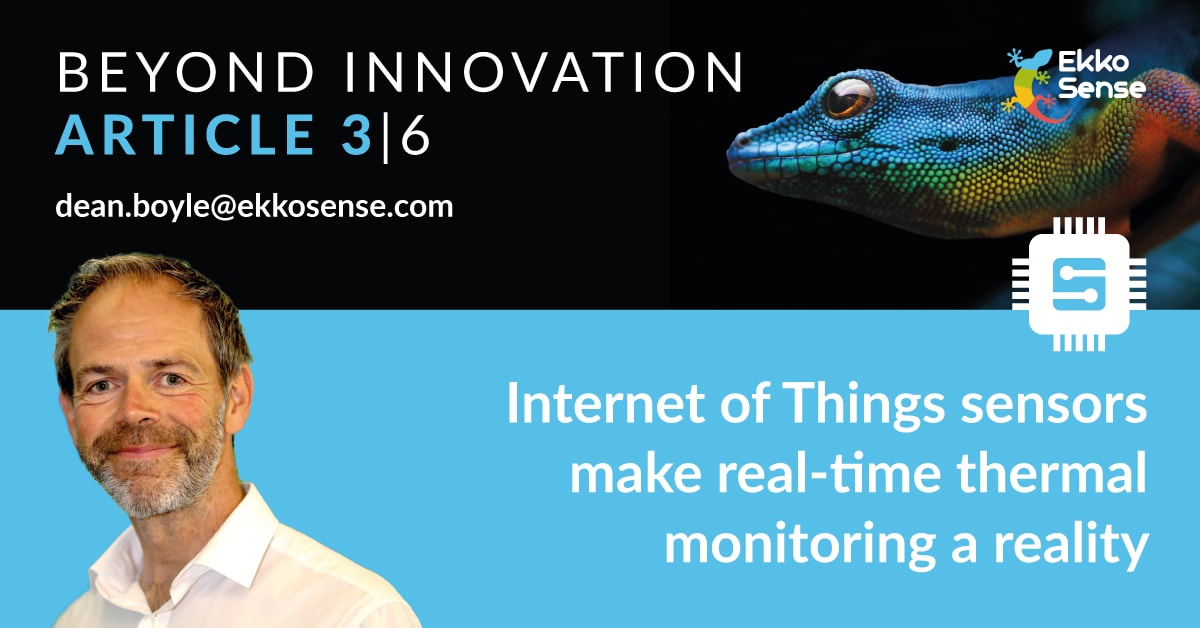Internet of Things sensors make real-time data center thermal monitoring a reality

My previous article considered why a more focused approach around machine learning and AI was likely to be most applicable for data centre operations. In this latest instalment in the series, I will look at how increased usage of new sensor technologies can impact data center thermal monitoring – particularly those based on Internet of Things technology – are set to open up the possibility of performance optimisation based on real-time data centre data.
In its 2022 prediction for the Worldwide Future of Operations, analyst firm IDC outlined how the COVID-19 pandemic has ‘accelerated the move to more remote operations, the development of more distributed decision-making processes, and a shift to data-driven operations’. From a data centre optimisation perspective, the importance of Internet of Things couldn’t be clearer – allowing operations teams to monitor and report temperature and cooling loads much more actively. The goal here is to improve the quality of data centre performance and enable higher-precision operations.
While Ericsson projects almost 30 billion IoT devices in place by the end of this year, growth in usage shows no sign of slowing down – indeed McKinsey analysis suggests there will be over 50 billion IoT devices connected by 2025, generating some 79.4 billion terabytes of data each year. We’re expecting significant IoT growth in the data centre space, with true data centre performance optimisation demanding much more active monitoring and reporting of temperature and cooling loads.
ASHRAE supports this need for greater data granularity, suggesting a minimum of three temperature sensors per rack for data centre thermal monitoring. However, achieving this probably requires around 10x more sensors than are currently deployed in today’s typical data centre. Our own research shows that only around 5% of M&E teams currently monitor and report actively on an individual rack-by-rack basis – and even less collect real-time cooling duty. However, if you want to track cooling loads in real-time – and generate the kind of machine learning insights you’ll need to enable true AI-powered optimisation – there’s no option but to go granular. And with the availability of the latest ultra-low-cost wireless sensors, there’s really no excuse not to do this in 2022.
By introducing the industry’s first true Internet of Things-enabled family of wireless thermal sensors, EkkoSense has disrupted the traditional sensor cost model and made the real-time thermal management of critical facilities such as data centres a possibility. In addition, we are also able to integrate with other leading sensor manufacturers such as Packet Power.
The good news is that by combining the latest generation of low-cost wireless sensors with accessible 3D visualisation techniques, and intelligent analytics engines based on machine learning and smart AI algorithms, operations teams can gain access to the real-time insights they need to manage their data centre infrastructure more efficiently.
The next article in this series will look at how the latest Digital Twin technologies are set to gain increased traction in the data centre space. By leveraging state-of-the-art 3D visualisations and virtual reality-style presentation, we’re now able to offer an intuitive, easy-to-use approach with EkkoSoft Critical – the market’s most accessible data centre monitoring and management platform.
Please take a look at the previous articles in the series
“Moving beyond discrete innovations to unlock truly disruptive data centre performance”
“Accelerating data centre optimisation through machine learning and AI”